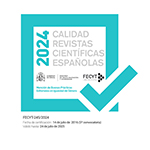Virtual reality (VR) in the English language classroom: an ethnographic study
Abstract
This article presents an ethnographic study that examines two similar teaching situations in the English language classroom. The first takes place in a virtual reality (VR) environment with native English speakers and the second, among peers in a non-immersive (non-VR) environment. The sessions were carried out over 3 months in a 6th grade class (N=24; 11- to 12-year-olds). The integration of VR in the classroom aimed to enrich and reinforce non-VR activities and thus provide more opportunities for oral production and comprehension in the target language. The interactions of 6 students in the two environments were analyzed using a Multimodal Conversation Analysis (MCA) approach. Although VR can reduce the precision of learners' language production, the results indicate that it facilitates more spontaneous use of the foreign language, in addition to promoting new opportunities for its production and understanding. The study demonstrates how VR and non-VR activities are complementary and promote student participation and commitment to language learning.
Downloads
Article download
License
In order to support the global exchange of knowledge, the journal Didáctica. Lengua y Literatura is allowing unrestricted access to its content as from its publication in this electronic edition, and as such it is an open-access journal. The originals published in this journal are the property of the Complutense University of Madrid and any reproduction thereof in full or in part must cite the source. All content is distributed under a Creative Commons Attribution 4.0 use and distribution licence (CC BY 4.0). This circumstance must be expressly stated in these terms where necessary. You can view the summary and the complete legal text of the licence.










